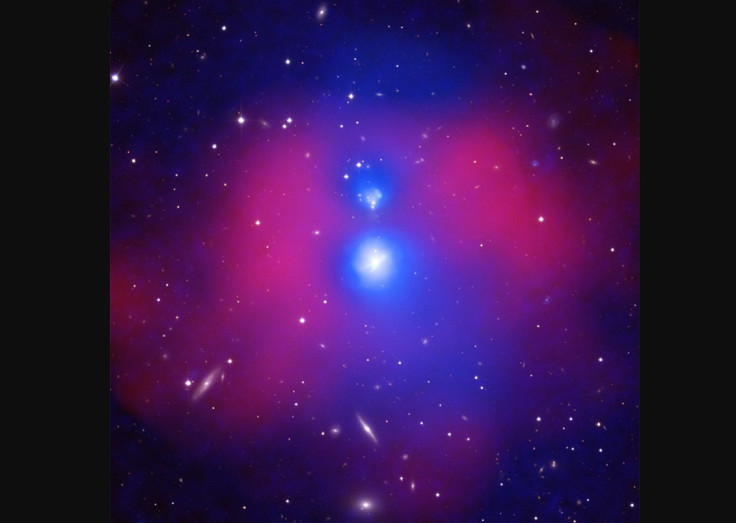Astronomers Spot One Of The 'Most Violent Mergers' Between Two Galaxy Groups

KEY POINTS
- Galaxies often bind with each other through gravity, either in galaxy groups of large galaxy clusters
- The system called NGC 6338 is composed of two galaxy groups that are colliding at speeds of 4 million miles per hour
- Researchers say it is one of the most violent mergers yet observed between two galaxy groups
- Such mergers will help astronomers understand how galaxy groups form and evolve over time
Most galaxies do not exist in isolation. Instead, gravity binds galaxies together in small “galaxy groups” or in bigger “galaxy clusters” with up to hundreds of thousands of galaxies bound together. Sometimes, gravity pulls these groups together to form an even bigger collection.
In a study published in the Monthly Notices of the Royal Astronomical Society, researchers describe discovering such a collision between two galaxy groups. Called NGC 6338, the system is roughly 380 million light-years from the Earth, with a total mass of about 100 trillion times the mass of the Sun.
Using NASA’s Chandra X-Ray Observatory, the ESA’s XMM-Newton, the Giant Metrewave Radio Telescope, and the Apache Point Observatory, researchers observed that the two galaxy groups are merging at speeds of 4 million miles per hour, making it one of the most violent collisions observed yet between two galaxy groups.
Researchers estimate that 83 percent of NGC 6338’s mass consists of dark matter, while 16 percent consists of hot gas and only 1 percent is made up of stars. According to the researchers, this indicates that the colliding galaxies will become a massive galaxy cluster in the future. Once the merger is complete, it will continue to attract other galaxies through gravity.
This is not the first study observing NGC 6338, however. Previous studies have shown the presence of cooler, X-ray emitting regions at the centers of the two galaxies known as “cool cores.” Through this information, astronomers were able to reconstruct the geometry of the system, revealing that the collision happened almost along the Earth’s line of sight.
Based on new observations with Chandra and XMM-Newton, researchers found that the gasses to the left and right of the cool cores are actually heated by shock fronts from the collision, much like how sonic booms are created by supersonic aircrafts.
While computer simulations have predicted this to happen, it is the first time that it can be clearly observed in a galaxy merger.
Another possible heat source in such galaxy clusters is energy emitted by supermassive blackholes. However, observations suggest that this is inactive in NGC 6338, as there is no evidence of jets of high-speed particles from black holes.
Observing one of the “most violent mergers” yet between two galaxy groups is not only fascinating, but it would allow astronomers to better understand how galaxy clusters grow and evolve over time.
© Copyright IBTimes 2025. All rights reserved.






















